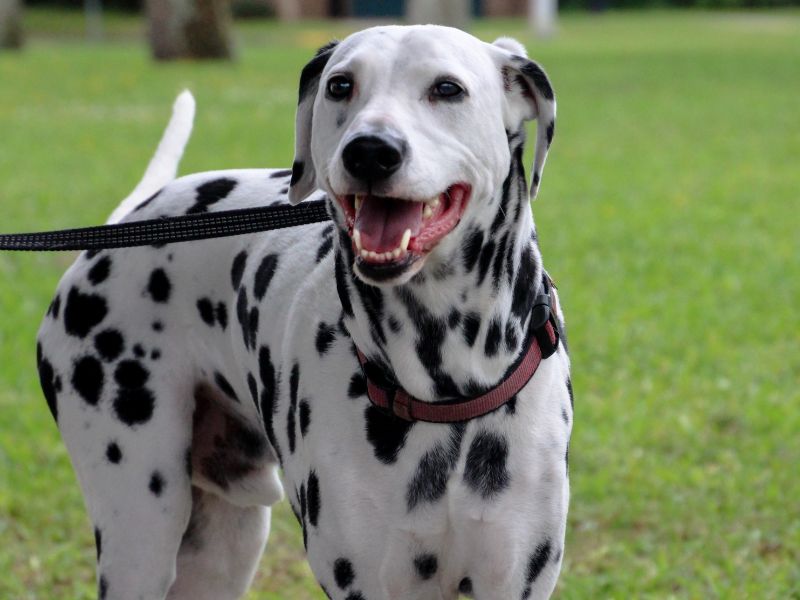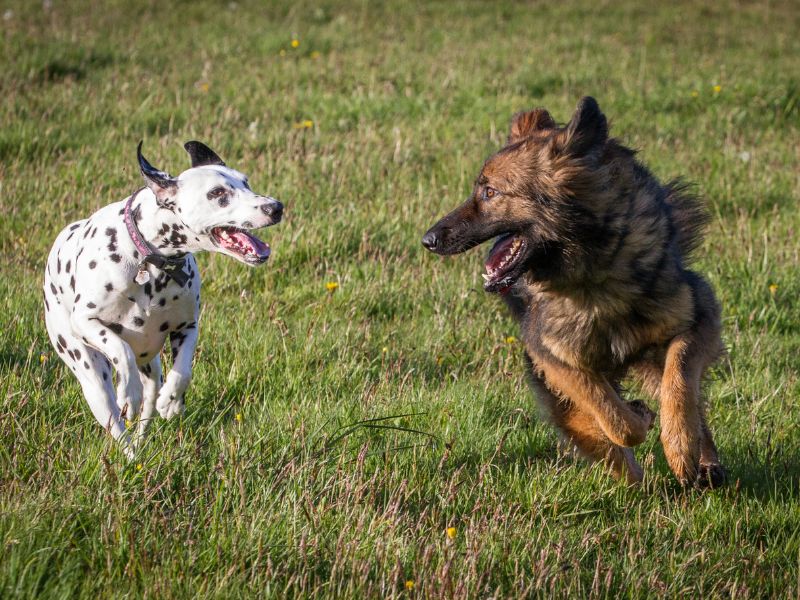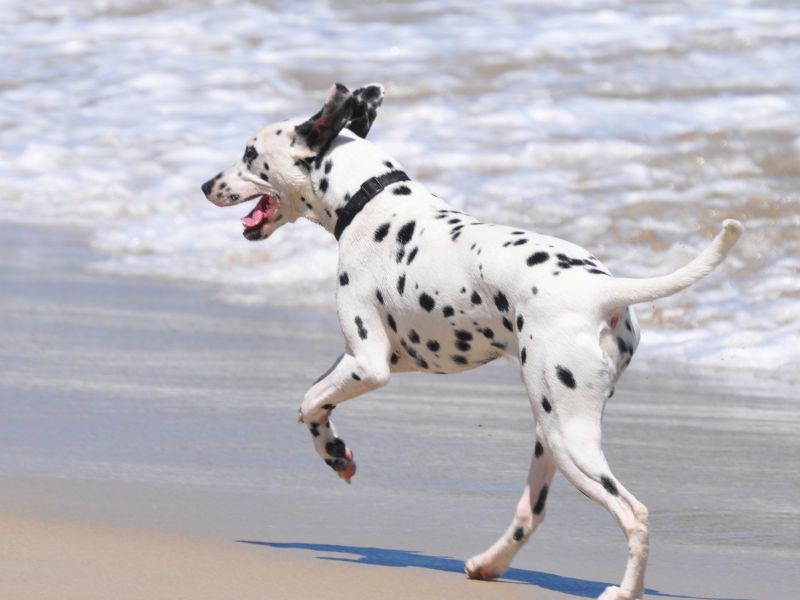The most notable feature of the Dalmatian is its unique spotted markings, generally a white coat with large black or brown spots throughout its coat. It is medium sized dog, and has been used in a variety of roles such as herding, hunting, ratting, and coaching – coaching entailed escorting a stagecoach and clearing the path ahead of crowds to allow the horses pulling the coach to proceed without hindrance. Dalmatians are intelligent and playful dogs, with boundless energy, and so require frequent exercise, they are loyal dogs, and enjoy human companionship.
Are Dalmatians as Intelligent as Labradors?
Both the Dalmatian and the Labrador are smart dogs. Both breeds are very intelligent and eager to please their owner. The Labrador though, is the easier to train, and can be trained for many specialized roles that perhaps the Dalmatian hasn’t quite the nous for. The Dalmatian can be stubborn at times, and requires much more repetition of tasks before it can be trained to an advanced level. The best way to train either breed is with positive reinforcement training, and early socializing of the pups with their environment, other dogs and humans. Whereas though, the Labrador will learn quickly and remember its training throughout adult dog life, with the Dalmatian it may be an ongoing task, reinforcing training and socialization to remind them how to act well-behaved around other people and animals.
Overall, the Dalmatian is definitely ahead of the curve with intelligence, and probably near the top of the league in the doggy intelligence field. It will need a little more attention while training, but the end result will be a dog any owner would be proud of.

Are Dalmatians and Great Danes Related?
There are so many dog breeds, and all dog breeds do come from a single species long ago that separated itself from the wolf to integrate in the lives of men. Human intervention, along the years has meant though, that single breed of dog which became domesticated, has evolved into a great variety of different dog breeds along the road of domestication. Many of these recognized dog breeds are closely related in one form or another, they have been bred for particular tasks, and many are so different and look so unrelated that it is hard to believe they came from the same ancestry.
As to Dalmatians and Great Danes, apart from being breeds of dog, there is no notable connection apart from perhaps the Harlequin Great Dane which has a marked coat with similarities to the Dalmatian, though the Harlequin Great Dane has irregular patches of black on a white coat, rather than spots like the Dalmatian. The Great Dane is one of the largest dogs in the world, whereas the Dalmatian is a medium sized dog. Therefore, they are not closely related apart from being breeds of dog.

What Is the Most Popular Dalmatian Mix?
Being beautiful dogs with unique markings, being strong and muscular, loyal and protective, there is not much that one would want to improve in the Dalmatian to make such a dog more desirable. Sometimes though, attempts are made to mix the breed with another to, for example, make a more docile animal, or one with less energy, and perhaps a little less destructive in nature if it has no outlet for that vast reserve of energy.
There are many popular Dalmatian mixes, too many to list here, though some of the most popular ones are the, Daloodle, or Dalmadoodle, which is a mix of the Dalmatian and the Poodle. There is the Labmatian, where the Dalmatian is mixed with the Labrador Retriever. The Dobermatian, a Doberman Pinscher and Dalmatian mix. The Germatian, which brings the German Shepherd into the Dalmatian mix, and lastly for this article, the Dalmeagle, which is one of the cutest dogs you will ever see, and is a mix of the Dalmatian and the Beagle.
Any of the five mixes above would make a great pet for even the most pernickety and fussy owner, but there are many more to choose from if a Dalmatian mix is something you would desire. I may write a more detailed examination of Dalmatian mixes in future, but of my preference above, I would most likely opt for the Dalmeagle.
See Also: What Are the Most Trainable Small Dogs?
And: What Are the Best Big Guard Dogs?
Five Quick-Fire Facts About Dalmatians Potential Owners Should Know
1. Dalmatians originally hailed from the East European country of Croatia; they are named after the Dalmatia region of that country.
2. Dalmatian pups are born spot free. Pups are born with a pure white coat; the spots arrive after around three months old.
3. Dalmatians are full of energy, they need regular walks and running around play to use all this excess of energy up. Be prepared to spend lots of time for exercise, training, and dog play if you desire a Dalmatian. If you are not the outdoors in all weathers type, perhaps choose another breed of dog.
4. Dalmatians shed, and they shed all year round, so be prepared for regular cleaning of dog hair, and if anyone in the home suffers from allergies, then perhaps another choice of dog would be more suitable.
5. Dalmatians like company. They can develop separation anxiety if left on their own for long periods, so a Dalmatian is more suitable for a home where at least one person is around for most of the day.
Featured image: A Dalmatian Running on the Beach

